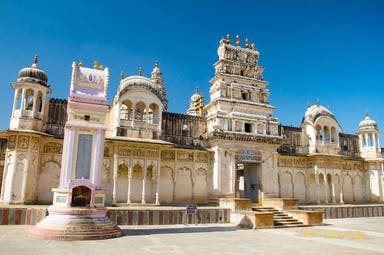Best travel destinations. Find out where to go
Where would you like to go?
Africa
Africa is one of the continent of the Earth, the third biggest after Asia and America, hosting 54 countries. It is characterized by a triangular shape and is totally surrounded by sea, except for a little zone near Isthmus of Suez.
Beacuse of its extension, in this geographical area it is possible to find very heterogeneus climate conditions and several various landscapes, among which deserts, savannas and rainforest.
The highest peaks in Africa are located in the area around Rift Valley. Here it is possible to admire the high mountains of Ruwenzori Chain, Mount Kilimanjaro and Mount Kenya, both are extinct volcanoes which present an ice cap. While, the Northern area of the continent hosts the largest desert of the world: the Sahara desert. In this area the climate is Mediterrenean with warm and dry summers and mild and humid winters.
Africa is famous for its varying and unique fauna, which is characterized by several species of felines, monkeys, herbivorous animals and big herds of buffalos, gnus, zebras, gazelles and many others. This scenario made possible the development of a tourism dedicated to safari and the knowledge of these natural beauties.
Although different ethnies live in Africa, it is possible to identify two main groups, which divide the continent into White Africa, in the South, and Black Africa in the Sub-Saharan zone. The spoken languages, most of them not standardized, are more than two thousand and vary from State to State, although the official languages are European because of the ancient colonizations.
The economy is mainly characterized by the agriculture, expecially of coffee, cotton, cacao, tea and rubber; the mining sector, in fact, Africa is rich in petroleum and minerals as gold, diamonds and copper; and by the manufacturing sector, which has plants suitable for local and international production.
View more- Botswana
- Egypt
- Ethiopia
- Kenya
- Madagascar
- Malawi
- Morocco
- Mozambique
- Namibia
- Rwanda
- South Africa
- Tanzania
- Tunisia
- Uganda
- Zambia
- Zimbabwe
Best trips in Africa
Asia
Asia is the largest and most popolous continent on the Earth, it has 51 countries, and it is the only one bounded by three different Oceans: Arctic Ocean, Indian Ocean and Pacific Ocean.
This geographical area boasts different natural landscapes and climates. In fact, in Asia it is possible to admire the highest mount on Earth: Mount Everest, but also the deepest point: the Challenger Deep, at the bottom of the Mariana Trench. Moreover, this continent covers a subarctic climate, an humid continental and steppe climate. This is why the temperature can reach -70°C in the coldest regions, as Siberia but at the same time a termometer can signals +54°C in the warmest zones, as the Lut Desert.
Asian population is very heterogeneus. People own different ethnological origins, cultures and religions. Asia was the cradle of many world religions, among which all the monotheistic. This factor combined with the great spirituality of the people, made possible the construction of many holy places, as churches, temples, pagodas, synagogues and mosques. Many of them were declared World Heritage Sites by Unesco.
Its economy is mainly based on agriculture, especially of rice and wheat, on the exportation of wood products, as paper and furnitures, on mining resources, as gold, iron, titanium and zinc. The manufacturing sector is also an important economical resource, above all in the Eastern part of the continent, where clothes and shoes, computers and cars are produced and then exported in the whole world. Moreover, in the relevant business centers also the tertiary sector is highly developed, here people work on softwares and other techological components.
View more- Bangladesh
- Bhutan
- Cambodia
- China
- Georgia
- Hong Kong
- India
- Indonesia and Bali
- Iran
- Israel
- Japan
- Jordan
- Kyrgyzstan
- Laos
- Malaysia
- Maldives
- Mongolia
- Myanmar
- Nepal
- Philippines
- Qatar
- Russia
- Sri Lanka
- Thailand
- Turkey
- United Arab Emirates
- Uzbekistan
- Vietnam
Best trips in Asia
Caribbean
The Caribbean can geographically be included in the countries surrounded by the Caribbean Sea, therefore all the islands belonging to the Antilles, an archipelago divided into Greater and Lesser Antilles and the coasts of some countries in South and Central America. These islands boast a moderate high temperature during the whole year, but between june and dicember they are subjected to tropical storm with high hurrican risks.
The majority of these islands has volcanic origin and boasts heterogeneus natural landscapes. In fact, it is possible to find dry areas but also lush vegetation with typical Caribbean royal palms.
Caribbean Islands were subjected to the colonization process, this is why the population mainly comes from the ancient African people that have been imported to work in the plantations and why the most common languages are European, as Spanish, English, French and Dutch. Even today it is possible to discover their colonial past, thanks to several evidences belonging to that period, especially in the architectonical field. Nowadays, many of these works are considered World Heritage Site by Unesco.
The main economical resources of the islands are the agriculture and coltivation of tobacco, tea, coffee and sugar, the mineral processing and tourism.
View moreBest trips in Caribbean
Europe
Europe, also known as Old Continent, is one of the smallest continents on the Earth, although it is one of the most populous. It includes 44 countries.
It is formed by a continental and a peninsular area, its borders are defined by natural features: to the North there is the Arctic Ocean, to the West the Atlantic Ocean, to the South the Mediterranean Sea and the Black Sea, while it is separated from Asia by the Ural Mountains and the Ural River.
This geographical area is located in a temperate climate zone, the weather is quite homogeneus between all its countries. Moreover, although it boasts a rich varieties of natural beauties, including forests, mountain chains, hills, coasts and lakes, it does not own places characterized by extreme conditions, inaccessible and unhabitated, as deserts or ice caps.
Under the economical point of view, Europe is one of the richest zone of the whole world. In fact, its economical sectors are highly developed, from agricolture, to manufacturing up to the tertiary sector. Tourism is one of the most important sectors, thanks to the cultural and natural sights hosted.
View more- Bulgaria
- Denmark
- England
- Finland
- Georgia
- Germany
- Greece
- Hungary
- Iceland
- Ireland
- Italy
- Macedonia
- Netherlands
- Portugal
- Russia
- Scotland
- Serbia
- Spain
- Sweden
- Switzerland
Best trips in Europe
Indian Ocean
Indian Ocean is the third largest Ocean on the Earth. It is completly located in the Oriental hemisphere and represents an importance trade route to connect Asia and Africa. Indeed, the main function of this ocean is to host relevant trade routes to exchange commercial goods among countries. The oil transport is one of these, thanks to the large reserves of hydrocarbons that this ocean bottom has.
In the Indian Ocean, the areas located in the North of equator are characterized by a weather influenced by monsoons, which often cause precipitations. While, the zones located in the south of equator are less windy, but more subject to summer storms. In addition, when the wind's directions change it is possible the cyclones' formation.
Although the high temperature of the Indian Ocean does not allow the production of plancton, and therefore the sealife is poor, this sea hosts more than 5000 species, some of them are endangered, as dugongs, turtles and whales.
View moreBest trips in Indian Ocean
Mediterranean Area
Mediterranean Sea flows through the coasts of some countries belonging to Europe, Africa and Asia. The history considers this geographical area one of the most important place for the development of the ancient western civility.
Because it does not have any connection with the Oceans, the Mediterranean Sea is a quite calm and the tides are limited. Moreover, the high average temperatures guarantee warm and dry summers and humid winters.
Geographically, the Mediterranean Sea is divided into two areas, the Western Mediterranean Sea, which is characterized by wide abyssal plains, and the Eastern Mediterranean Sea, that includes the Adriatic Sea, the Ionian Sea, the Aegean Sea, the Lybian Sea and the basin of the Levantine Sea.
The Mediterrean Sea hosts a large biodiversity, thanks to the presence of different typologies of habitat. This is why were declared some protected zones , as the area between the Ligurian Sea and Tuscany, where it is possible to admire particular species, as the common fin whales.
View moreBest trips in Mediterranean Area
North America
North America is a geographical area included in the continent of America. It has 23 countries, among which the territories in North America, in Central America and the Caribbean Islands. The border between Panama and Colombia identifies the starting point of South America.
Under the geographical features' point of view, North America can be divided into four big categories: the Great Plains, from Gulf of Mexico to the Canadian Arctic; the young western mountains; the Canadian Shield, an upland located in the Central-Oriental zone of Canada; and the North-East regions. The last one is the most heterogeneous area, in fact it is possible to find mountain chains, as Appalachian Mountains, the coastlines faced the Atlantic Ocean and the Florida Peninsula.
North America has many different climate zones because of its big extension, this fact has as natural consequence a diversification in terms of flora and fauna from country to country.
Under the economical aspect, the tertiary sector is the most important and developed, it represents the major earnings source.
View moreBest trips in North America
Oceania
Oceania, also known as the New Continent, because it was the last continent discovered by the European, is the smallest continent on the Earth and also the less populous, after Antarctica. It is composed by 14 countries.
It is ideologically divided into four main regions, among which Australia and New Zeland, Micronesia, Melanesia and Polynesia. The three main islands are characterized by mountain chains, the highest peaks are located in New Guinea, they are Puncak Jaya and Mount Wilhelm, followed by other mountains belonging to the Alps of New Zeland and Australia.
Although Oceania is not very large, it boasts four different climatic zones. Near the tropic there is a tropical climate with moderate temperature, in North Australia and New Guinea there is a tropical humid climate, while the interior part of Australia is characterized by a dry climate and the coasts are prevailed by a temperate climate. These conditions permitted the diffusion of different typologies of flora. Indeed, it is possible to find tropical plants and eucalyptus, as well as evergreen forests and rainforests. Oceania is also famous to be the home of some rare animals, as kangaroo, koala and dingo.
Under the economical point of view, the main source of earnings is the agriculture, especially of cereals and the processing of wool. Also tourism plays a big role for the economy of this country, above all the one developed on the islands of Melanesia, Micronesia and Polynesia.
View moreBest trips in Oceania
Pacific Ocean
Pacific Ocean is the largest ocean on the Earth. It extends from Bering Sea in the Arctic to the frozen Ross Sea in the Antarctic, and from the Indonesian coasts to Colombia. It also includes several islands, more than which are enclosed in the other oceans, and a total of 17 independent countries.
Its bottom is heterogeneous, indeed it is possible to find submerged volcanic mountains, oceanic volcanic islands but also deep trenches, as the Mariana Trench.
Pacific Ocean includes five climate regions, among which on the Western there is the monsoon region, with large seasonal variations, while near equator, where there is the large number of islands, the weather is characterized by stable winds that allow to have constant temperature.
Because of the great depth of the ocean, the exploitation of the mineral wealth is problematic; while in shallow waters are extracted natural gas, petroleum and pearls. Anyway, the most profitable resource is fishing.
View moreBest trips in Pacific Ocean
South America
South America is a geographical region belonging to the American continent, it includes 12 sovereign states. It is located in the Western hemisphere and the mostly in the Southern hemisphere. Its borders are defined by the Pacific Ocean on the west, the Atlantic Ocean on the north and east and by the Caribbean Sea and the Panama Canal on the north-west.
Thanks to the large extension of the country, South America boasts different natural landscapes. Here, it is possible to find the highest waterfall of the world, Angel Falls in Venezuela, the largest river by volume, the Amazon River, the longest mountain range, the Andes, the Atacama Desert, the driest non-polar place on Earth, the widest rainforest: the Amazon Rainforest and the highest commercially navigable lake in the world, Lake Titicaca.
Of course, also the weather is extremly heterogeneous and differs region by region, from the humid warm of the rainforest up to the cold dry of Patagonia.
Because South America has suffered the colonization process, the official languages are european, but inside the region there are also local idioms, as Guarani language, especially in Paraguay.
The main source of earnings include the mineral processing and the agriculture. Moreover, also the tourist sector is highly developing, thanks to the breath-taking landscapes and natural beauties and the important archaeological sites that attract many and many tourists.
View more





 Tailor-made
Tailor-made




















 Soggiorno
Soggiorno































